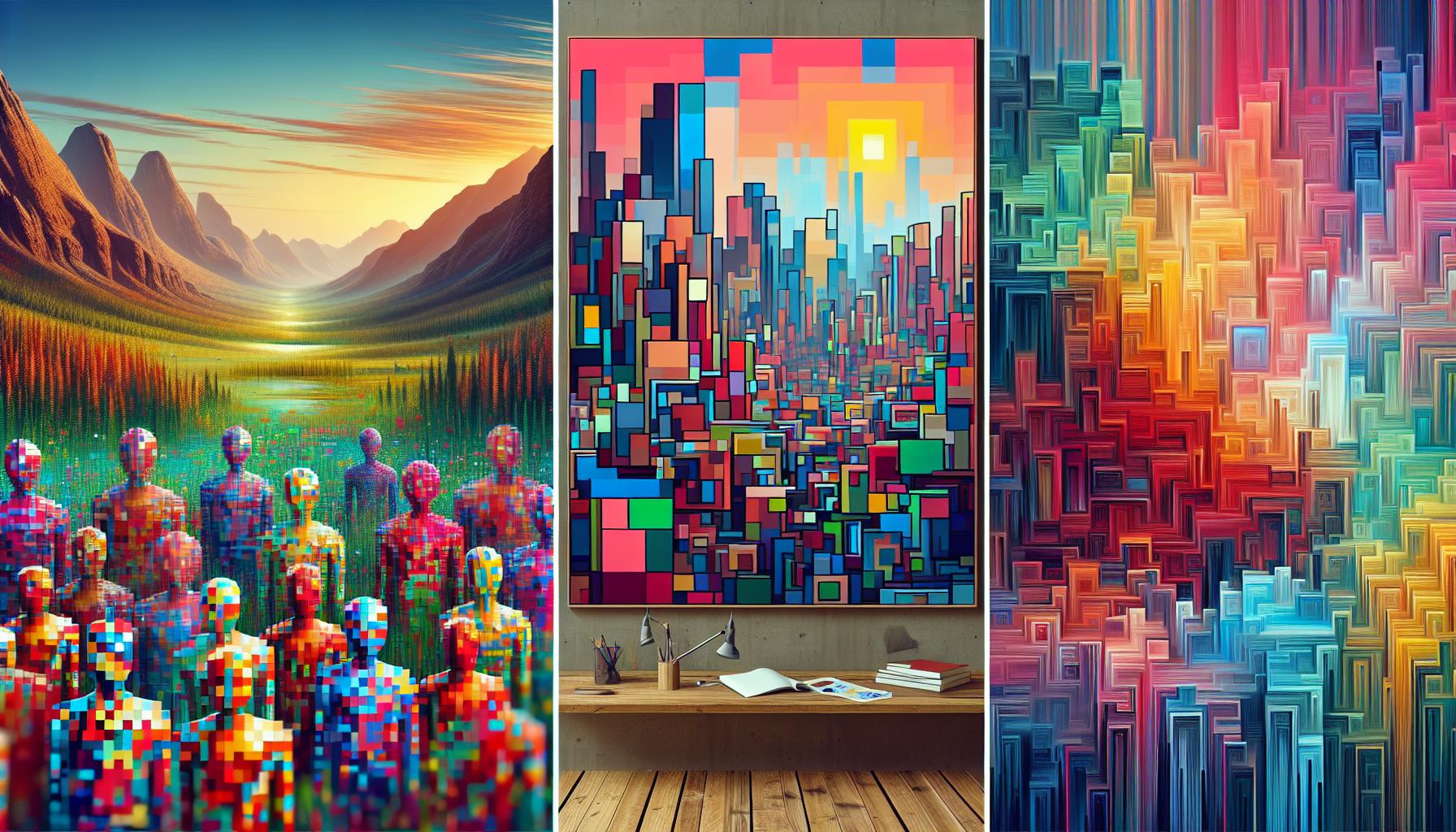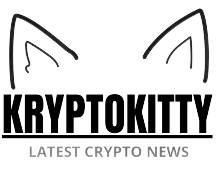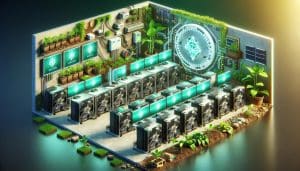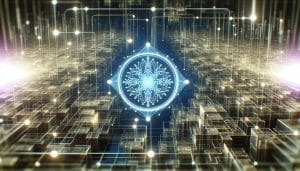If you’ve delved into the world of blockchain and digital art, you’ve likely come across the term “Ethereum NFT Pioneers.” These innovators have been at the forefront of revolutionizing the way we perceive and trade digital assets. By leveraging Ethereum’s blockchain technology, they have paved the way for a new era of ownership and authenticity in the digital realm.
Imagine owning a unique piece of digital art that is securely stored on the blockchain, with its provenance and scarcity guaranteed. Ethereum NFT Pioneers have unlocked the potential for artists and creators to tokenize their work, providing a new avenue for monetization and exposure. Through their vision and creativity, they have reshaped the art market and empowered individuals to truly own their digital creations.
Understanding Ethereum’s Role in NFT Innovation
The Rise of NFTs on Ethereum
When exploring the realm of Ethereum NFT pioneers, it’s essential to recognize the significant role that Ethereum has played in the proliferation of non-fungible tokens (NFTs). Ethereum, as one of the leading blockchain platforms, has become the primary ecosystem for NFT development and trading. NFTs on Ethereum enable a wide range of digital assets to be tokenized securely and transparently, revolutionizing how creators can monetize their work.
The robust infrastructure of Ethereum allows for the creation and issuance of unique tokens that represent ownership of digital content. Artists, collectors, and enthusiasts alike leverage Ethereum’s blockchain to authenticate and trade NFTs seamlessly. The decentralized nature of Ethereum ensures trust and transparency in the ownership and transfer of these digital assets, setting it apart as the foundation for NFT innovation.
Smart Contracts and Token Standards
Central to Ethereum’s dominance in the NFT space are smart contracts, self-executing contracts with predefined rules encoded within them. Smart contracts facilitate the creation and transfer of NFTs by automating the process without the need for intermediaries. Within Ethereum’s ecosystem, the ERC721 token standard has emerged as the benchmark for NFTs, defining how these unique tokens are created and managed.
The ERC721 standard enables individual tokens to possess distinct attributes, metadata, and ownership details, making each NFT truly one-of-a-kind. By adhering to this standard, Ethereum NFT pioneers can ensure the authenticity and scarcity of their digital assets. The use of smart contracts and robust token standards like ERC721 has propelled Ethereum to the forefront of the NFT revolution, solidifying its position as the preferred platform for NFT creation and trading.
By leveraging Ethereum’s advanced blockchain technology, NFT creators and collectors have unlocked a new paradigm in digital ownership and expression. The platform’s emphasis on decentralization, security, and interoperability has ushered in a new era of innovation, empowering individuals to engage with and own digital assets in ways never before possible. As Ethereum continues to evolve, its impact on the NFT landscape is set to grow, shaping the future of digital ownership and the creative economy.
Key Ethereum NFT Pioneers and Their Impact

CryptoPunks: The First Ethereum NFT Phenomenon
When discussing Ethereum NFT pioneers, it’s impossible not to mention CryptoPunks. Considered the trailblazers in the NFT landscape, CryptoPunks are 24×24 pixel art images generated algorithmically on the Ethereum blockchain. Released in 2017 by Larva Labs, they are hailed as the first NFT project on Ethereum.
Every CryptoPunk is unique and owned by a specific address on the Ethereum blockchain. The project gained immense popularity for its innovativeness and the concept of rare collectibles stored as NFTs. With only 10,000 available, each CryptoPunk possesses distinct characteristics and features, making them highly sought after by collectors and investors alike.
Etheria: The Oldest Ethereum NFT Project You’ve Never Heard Of
While CryptoPunks took the spotlight early on, Etheria stands as one of the oldest Ethereum NFT projects that flew under the radar for many. Created by Peter Shinette in 2015, Etheria focuses on blockchain-based virtual worlds where users can own, trade, and interact with digital assets in a decentralized environment.
Etheria’s groundbreaking concept of decentralized digital assets paved the way for the NFT ecosystem we see today. By allowing users to own virtual real estate and assets securely on the Ethereum blockchain, Etheria laid the groundwork for the future development of NFT platforms and use cases.
Art Blocks: Programmable Art Leading the Way
Art Blocks represents a paradigm shift in the world of NFTs with its innovative approach to creating programmable art on Ethereum. Founded by Erick Caldwin, Art Blocks offers a platform where artists can deploy algorithms to generate unique digital artworks as NFTs.
Through Art Blocks, artists can explore infinite possibilities for creating generative art pieces that are tokenized as NFTs. This fusion of art and technology has garnered significant attention in the NFT community, showcasing the creative potential of Ethereum’s blockchain for producing one-of-a-kind digital assets.
These Ethereum NFT pioneers, including CryptoPunks, Etheria, and Art Blocks, have collectively reshaped the NFT landscape, demonstrating the transformative power of blockchain technology in revolutionizing digital ownership and creative expression.
Technological Advancements Pioneered by Ethereum NFTs
ERC-721: The Standard for NFTs
Technological Advancements Pioneered by Ethereum NFTs
When it comes to non-fungible tokens (NFTs), Ethereum’s ERC-721 standard has played a pivotal role in revolutionizing the digital asset landscape. Unlike cryptocurrencies such as Bitcoin or Ethereum itself, which are interchangeable with one another, NFTs are unique digital assets with distinct ownership and properties. ERC-721, introduced by Ethereum, defines the standard interface for NFTs, enabling developers to create and interact with these one-of-a-kind tokens.
ERC-721 has set the benchmark for NFTs by providing a blueprint for token issuance, ownership transfer, and secure storage on the Ethereum blockchain. By adhering to this standard, developers can ensure the interoperability of NFTs across various platforms and applications, fostering a seamless ecosystem for digital asset ownership and exchange.
Example: If you own a rare Crypto Kitty created using the ERC-721 standard, its unique genetic makeup and ownership details are stored securely on the Ethereum blockchain, ensuring its authenticity and scarcity.
Interoperability and the Future of Digital Ownership
Interoperability, a key feature of blockchain technology, holds immense promise for the future of digital ownership, particularly in the realm of NFTs. With Ethereum’s NFT pioneers leading the way, the concept of owning and trading digital assets transcends individual platforms and marketplaces, creating a unified ecosystem for creators and collectors alike.
By embracing interoperability standards like ERC-721, Ethereum NFT projects have laid the foundation for a decentralized digital economy where assets can move seamlessly across different applications without losing their unique properties. This interoperability paves the way for innovative use cases, such as integrating NFTs into virtual worlds, gaming ecosystems, and digital art marketplaces, expanding the possibilities for creative expression and value creation.
Example: A rare Gen0 Founder Kitty, bred and traded on a virtual cat marketplace using ERC-721 standards, can be seamlessly integrated into an NFT gaming economy, where its unique traits and cattributes contribute to the overall gameplay experience.
As Ethereum NFT pioneers continue to push the boundaries of blockchain technology, the future of digital ownership looks increasingly interconnected, decentralized, and vibrant with possibilities. Through technological advancements like ERC-721 and a focus on interoperability, the landscape of non-fungible tokens is not just evolving—it’s redefining how we perceive and interact with digital assets in the decentralized era.
Challenges Faced by Ethereum NFT Pioneers
Scalability and Gas Fees
When delving into the world of Ethereum NFTs and blockchain technology, one significant challenge that pioneers face is the issue of scalability and high gas fees. As an Ethereum NFT enthusiast, you might have encountered the frustration of slow transaction speeds and soaring fees when interacting with NFTs on the Ethereum network. These challenges can hinder the seamless and cost-effective trade of NFT assets.
The scalability problem arises due to the limitations of the Ethereum blockchain, which can only process a certain number of transactions per second. This bottleneck often leads to network congestion during peak trading times, causing delays and increased fees. For Ethereum NFT pioneers looking to create, buy, or sell digital assets, these scalability issues can impede the growth and adoption of NFT technology.
Gas fees, another pressing concern for Ethereum NFT pioneers, refer to the transaction fees required to execute operations on the Ethereum network. These fees fluctuate based on network demand and can sometimes reach exorbitant levels during periods of high activity. As you navigate the world of NFTs on Ethereum, you must consider the impact of gas fees on the cost-effectiveness and viability of NFT transactions.
To address these challenges, Ethereum developers are actively working on solutions to enhance scalability and reduce gas fees. Proposed upgrades like Ethereum 2.0 and layer-two scaling solutions aim to improve network throughput and lower transaction costs, offering a more efficient environment for NFT pioneers to operate in. By staying updated on these developments and exploring alternative blockchains with lower fees, you can navigate the challenges posed by scalability and gas fees in the Ethereum NFT ecosystem.
Environmental Concerns and the Shift to Proof of Stake
As an Ethereum NFT pioneer, you should be aware of the environmental concerns surrounding blockchain technology and the transition from proof of work to proof of stake consensus mechanisms. The energy-intensive nature of proof of work mining, which powers the Ethereum network, has sparked debates about its environmental impact and sustainability.
The process of validating transactions on the Ethereum blockchain through mining consumes significant amounts of electricity, contributing to carbon emissions and environmental degradation. This issue has prompted discussions within the blockchain community about transitioning to more eco-friendly consensus mechanisms like proof of stake. Ethereum’s upcoming upgrade to Ethereum 2.0 will implement a proof of stake model, offering a greener and more sustainable approach to securing the network.
By embracing proof of stake, Ethereum NFT pioneers can contribute to reducing the carbon footprint of blockchain technology while enhancing the scalability and efficiency of the Ethereum network. This shift not only addresses environmental concerns but also fosters a more sustainable ecosystem for NFT creators and collectors to engage with digital assets responsibly.
As you continue your journey in the Ethereum NFT space, staying informed about the environmental impact of blockchain technologies and participating in the transition to proof of stake can position you as a conscientious pioneer shaping the future of decentralized digital ownership.
The Future of NFTs on Ethereum
Upcoming Projects to Watch
As you dive into the world of Ethereum NFTs, keep an eye on exciting upcoming projects that are set to make waves in the NFT space. These innovative initiatives are poised to redefine digital asset ownership and offer unique opportunities for collectors and creators alike.
- Virtual Cat Marketplace: Imagine a virtual marketplace where blockchain-based digital pets take center stage. These virtual creatures, often represented as unique NFTs, can be bought, sold, and bred on platforms like CryptoKitties. Keep an eye on how these digital pets evolve and affect the NFT ecosystem.
- NFT Gaming Economy: The intersection of NFTs and gaming is set to revolutionize how in-game assets are owned and traded. Projects like Gen0 Founder Kitties are pioneering the concept of blockchain collectibles within gaming environments. Stay tuned for developments that merge gameplay with digital asset ownership.
- Blockchain Collectibles Mania: With the growing popularity of blockchain collectibles, projects like Rare Crypto Kitty are leveraging the Ethereum network to create rare and valuable NFTs. Explore how these unique digital collectibles are reshaping traditional notions of ownership and scarcity.
Ethereum 2.0 and Its Impact on NFTs
Ethereum 2.0 represents a significant milestone in the evolution of the Ethereum network, aiming to address key challenges that have impacted NFT pioneers and enthusiasts. Understanding the implications of Ethereum 2.0 on the NFT ecosystem is crucial for navigating the future landscape of decentralized digital assets.
- Ethereum Gas Issues: One of the primary pain points for NFT transactions on Ethereum has been the high gas fees associated with interacting with the blockchain. Ethereum 2.0’s shift to a proof-of-stake consensus mechanism aims to improve scalability and reduce transaction costs, offering relief to NFT creators and collectors.
- Decentralized Digital Assets: The move towards Ethereum 2.0 underscores the transition towards a more sustainable and efficient blockchain ecosystem. As NFTs continue to gain traction as valuable digital assets, the upgrade to Ethereum 2.0 is poised to enhance the overall infrastructure supporting decentralized ownership and trading of non-fungible tokens.
By staying informed about upcoming NFT projects and the impact of Ethereum 2.0, you can position yourself at the forefront of the ever-evolving world of Ethereum NFTs. Embrace the future possibilities presented by these developments and seize the opportunities they offer for digital asset enthusiasts like yourself.
Conclusion
As Ethereum NFT pioneers continue to push the boundaries of digital asset ownership, the landscape of blockchain technology evolves rapidly. Challenges such as scalability and high gas fees persist, but solutions like Ethereum 2.0 offer hope for a more sustainable future. Projects like the Virtual Cat Marketplace and NFT Gaming Economy signal a shift towards innovative applications in the NFT space. By staying informed and adaptable, you can navigate the complexities of decentralized digital ownership and contribute to the ongoing transformation of the blockchain ecosystem.
Frequently Asked Questions
What are Ethereum NFT Pioneers?
Ethereum NFT Pioneers are individuals or projects leveraging blockchain technology to revolutionize digital asset ownership. Key examples include CryptoPunks and Etheria.
What is Ethereum’s ERC-721 standard?
Ethereum’s ERC-721 standard defines a common set of rules for creating non-fungible tokens (NFTs) on the Ethereum blockchain, enabling unique digital asset ownership.
What challenges do Ethereum NFT Pioneers face?
Ethereum NFT Pioneers face scalability issues and high gas fees on the Ethereum network, impacting the efficiency and accessibility of digital asset transactions.
How does Ethereum address environmental concerns in NFTs?
Ethereum is transitioning from proof of work to proof of stake in Ethereum 2.0 to reduce energy consumption and improve sustainability in the NFT ecosystem.
What upcoming projects are shaping the NFT space?
Projects like the Virtual Cat Marketplace, NFT Gaming Economy, and Blockchain Collectibles Mania are redefining digital asset ownership and trading within the NFT space.








